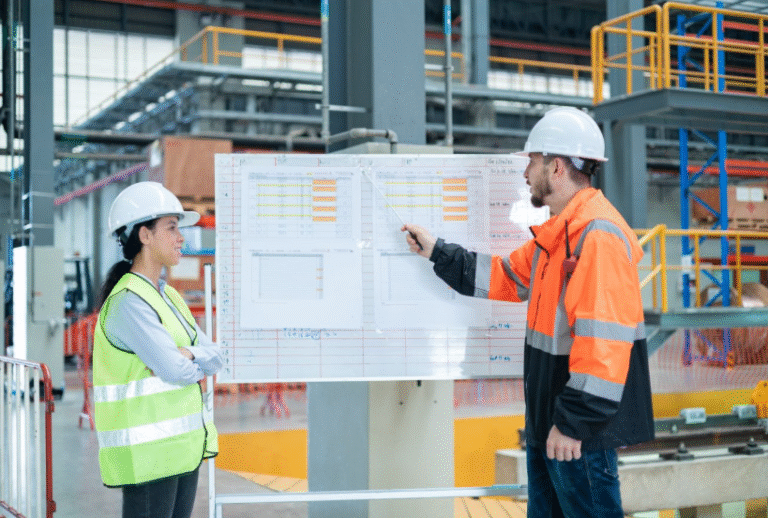Enhancing Metal Fabrication Efficiency
Introduction
Precision and surface quality are critical in metal fabrication processes. One of the key components contributing to this is the scratch free press brake v dies, which allow for smooth, high-quality bends without damaging the material. Understanding their types, applications, and maintenance is essential for optimizing operations and maintaining consistent results.
The Role of V Dies in Press Brakes
V dies form the lower part of a press brake tooling system, working in conjunction with the punch to bend sheet metal accurately. They guide the metal and ensure the correct bend angle while reducing the risk of surface imperfections.
Scratch free press brake v dies are specially engineered with polished or coated surfaces to minimize contact friction and prevent scratches on delicate materials. This makes them ideal for high-quality, visible components where surface integrity is crucial.
See also: Ensuring Reliability and Trust in Modern Tech
Types of Scratch Free V Dies
Different v die profiles are available to accommodate various bending requirements:
Standard V Dies
Suitable for general metal bending tasks, these dies are versatile and used for most applications.
Wide V Dies
These are ideal for bending thicker materials or achieving larger radii. Their wider angle distributes pressure evenly, reducing the chance of surface damage.
Narrow V Dies
Used for precise, tight-radius bends, narrow dies are essential when detail and accuracy are critical.
Polished and Coated Dies
These dies have special surface treatments to further prevent scratching and increase tool longevity. Coatings also reduce friction and wear during repeated bending operations.
Advantages of Scratch Free Dies
Using scratch free press brake v dies offers several benefits:
- Preservation of material surface: Reduces the need for post-bending finishing.
- Reduced material waste: Fewer rejects due to scratches or marks.
- Enhanced precision: Consistent bending angles and repeatable results.
- Extended tool life: Smooth surfaces reduce wear and tear.
- Higher efficiency: Less time spent on correcting defects.
Selecting the Appropriate Die
Proper selection of scratch free v dies involves evaluating key factors:
- Material thickness and type – Softer metals require smoother surfaces, while harder metals demand more durable dies.
- Bend angle and radius – Ensures proper die profile to achieve desired results.
- Press brake tonnage – The machine must be capable of handling the force required.
- Production volume – High-volume operations benefit from durable, easy-to-change dies.
Accurate selection improves workflow, reduces scratch free press brake v dies wear on the machine, and ensures high-quality results.
Maintenance and Care
Maintaining scratch free press brake v dies is crucial for performance and longevity:
- Clean dies after each use to remove metal particles.
- Inspect for chips, scratches, or wear before operation.
- Apply protective coatings or lubricants when recommended.
- Store dies properly on racks or in designated compartments to prevent damage.
Regular maintenance ensures reliable performance and reduces the risk of defects in finished products.
Safety Considerations
Handling these dies requires caution due to their weight and the forces involved:
- Use lifting aids or cranes for heavy dies.
- Wear protective gloves and safety footwear.
- Ensure the press brake is off when installing or removing dies.
- Secure dies properly before starting any bending operation.
Following safety protocols protects both operators and the integrity of the dies.
Industrial Applications
Scratch free v dies are essential in industries where surface quality and precision are critical:
- Automotive: Panels, brackets, and components requiring a smooth finish.
- Aerospace: Structural parts with tight tolerances and critical surfaces.
- Consumer goods: Appliances, decorative metal items, and enclosures.
- Construction: Architectural elements, decorative panels, and metal fixtures.
These dies help manufacturers maintain high standards while reducing the need for secondary finishing operations.
Technological Advancements
Recent advancements in press brake dies have further enhanced their performance:
- Quick-change systems reduce setup time.
- Laser-aligned dies ensure perfect positioning.
- Modular dies allow for complex bends without multiple setups.
- Surface coatings and polishing improve durability and reduce friction.
These innovations help workshops increase productivity, reduce downtime, and maintain consistent quality.
Conclusion
Scratch free press brake v dies play a vital role in achieving precision bends while protecting material surfaces. Correct selection, careful maintenance, and adherence to safety practices ensure consistent results, reduce waste, and extend tool life.
By integrating modern die technologies and maintaining high operational standards, manufacturers can enhance efficiency, maintain superior quality, and achieve long-term success in metal fabrication.
These dies are not just tools but strategic assets in ensuring reliability, precision, and excellence in every bending operation.






